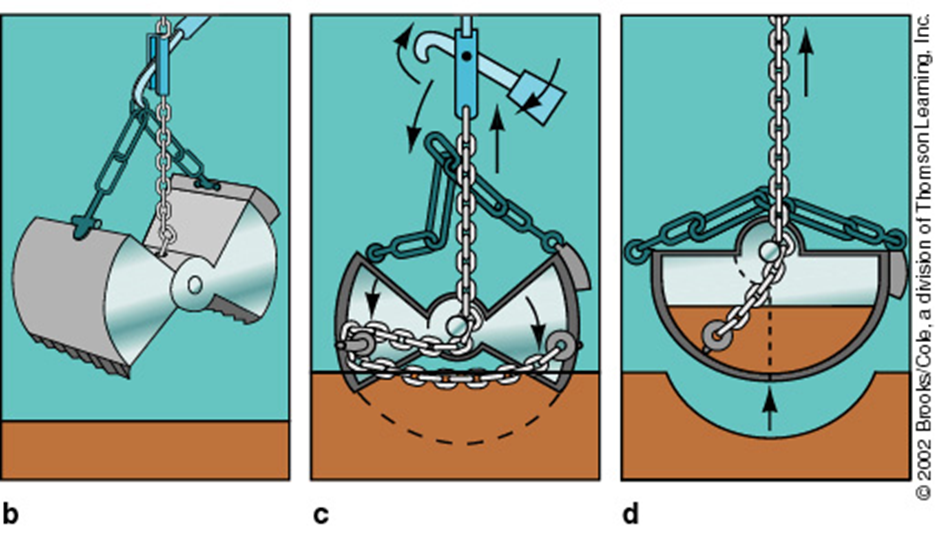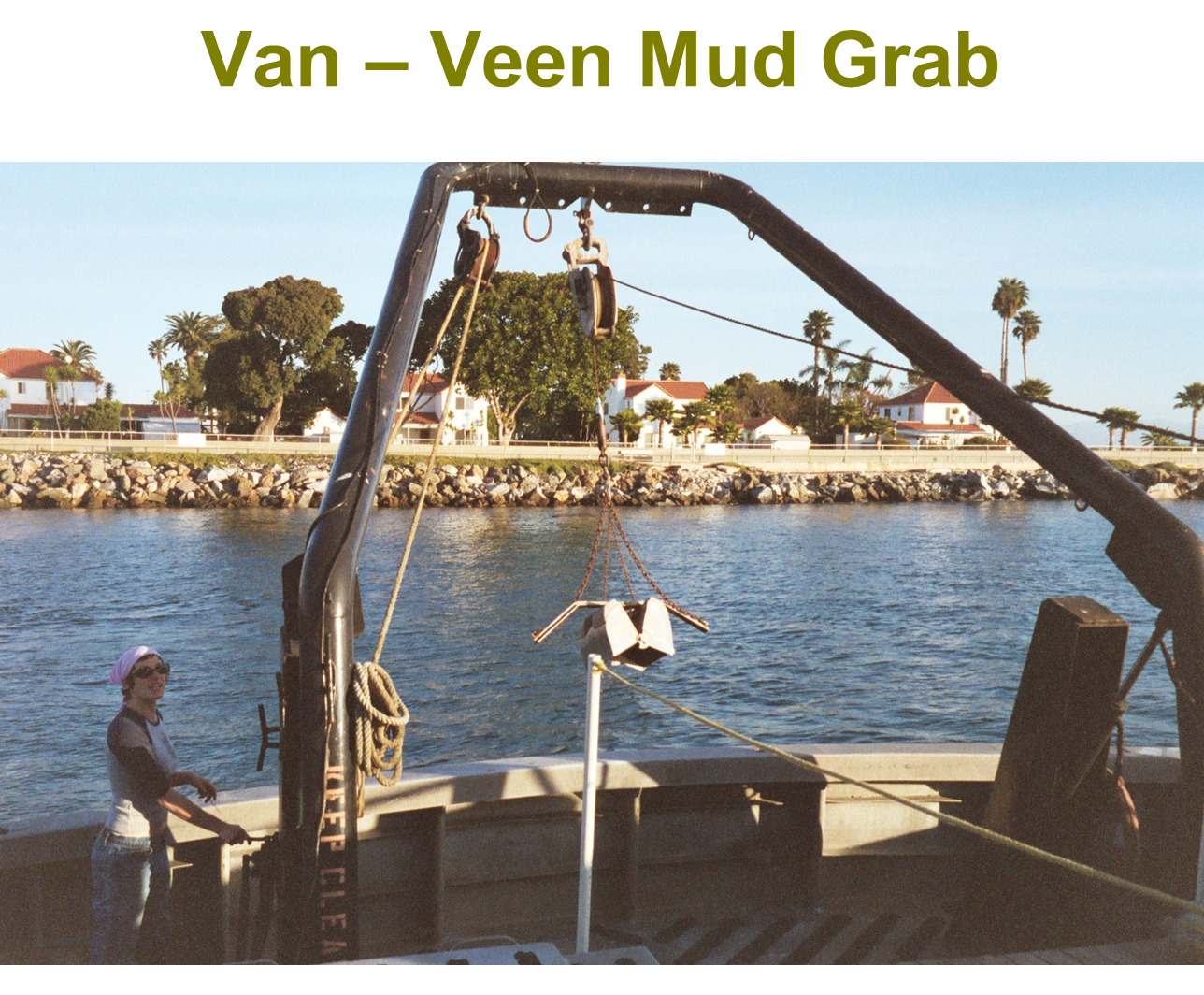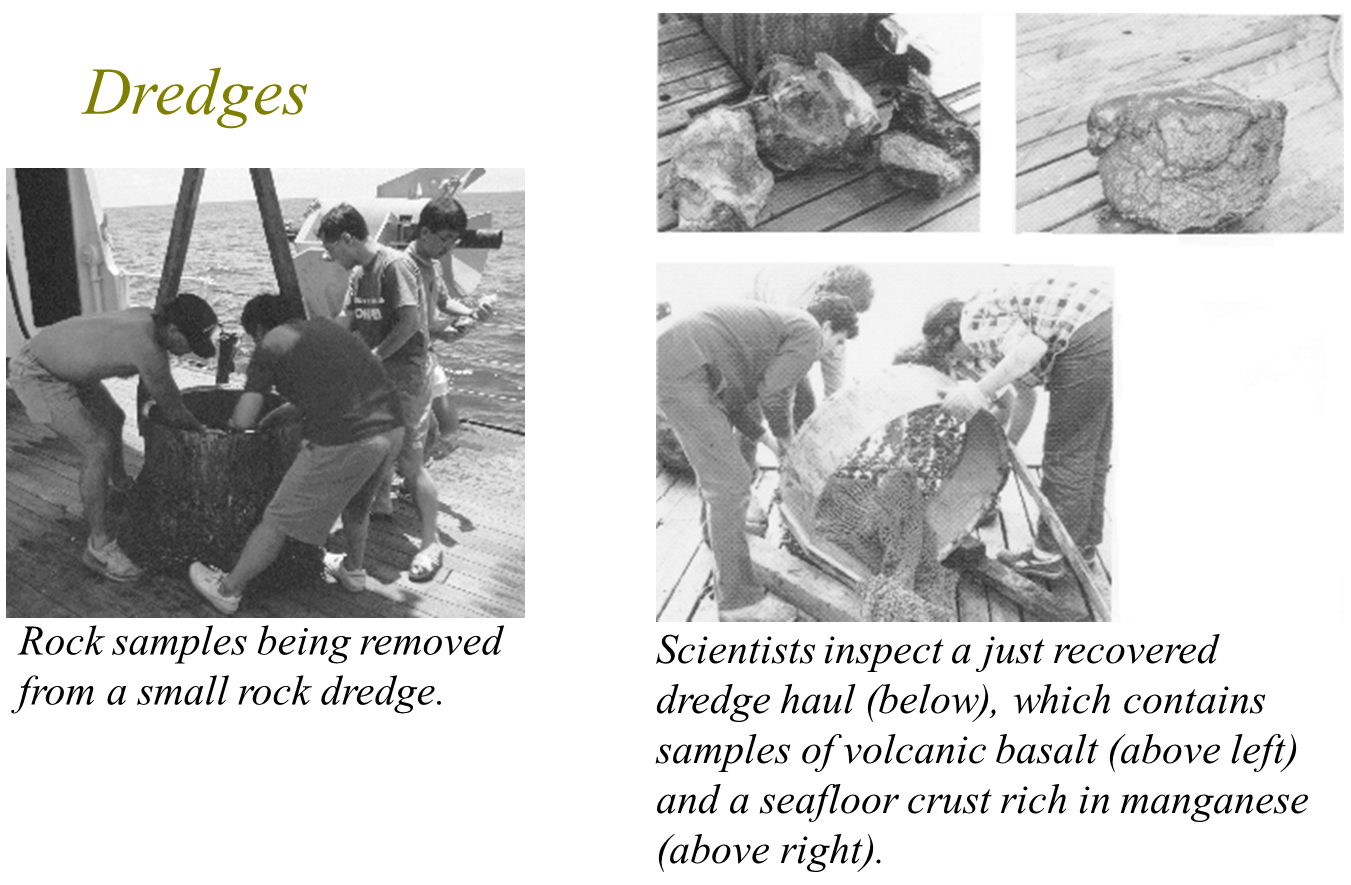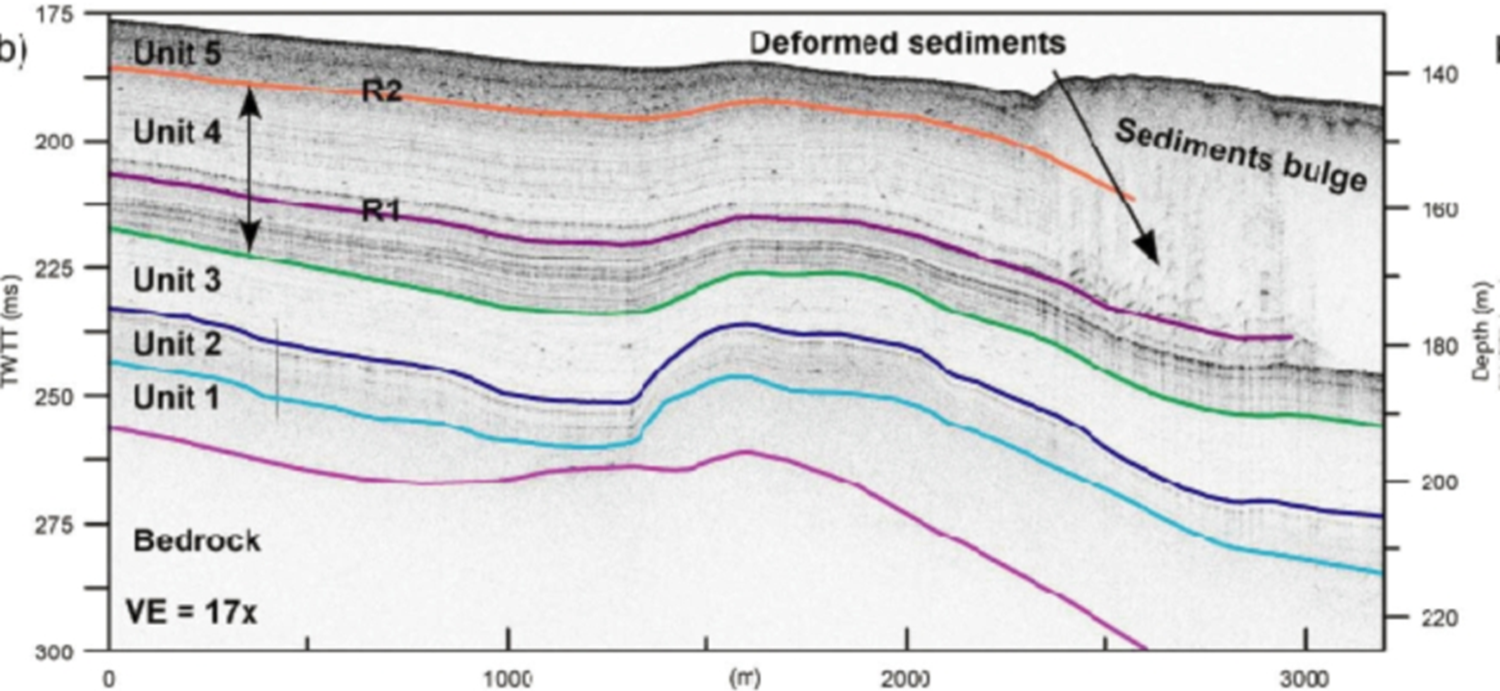Studying Sediments
How do scientists study sediments?
Scientists use a variety of methods, including:
- Deep-water cameras
- Clamshell samplers
- Dredges
- Piston Corers - Allows a cylinder of sediment to be taken for analysis to determine the age of the material, as well as the density, strength, molecular composition and radioactivity of the sediment.
- Drilling Ocean Cores & Core libraries- Scientists drill into the ocean sediments to collect cores that contain the layers of sediment under the ocean floor. These cores are stored in temperature controlled core libraries so other scientists can study them as well.
- Seismic profilers





|
Sources: |


What can scientists learn by studying sediments?
- Historical information
- Location of natural resources, especially crude oil and natural gas
- Depletion of onshore resources - need alternatives
- Sand & Gravel
- Phosphorite
- Sulfur
- Coal
- Oil and Gas

- Gas Hydrates - are formed from a mixture of water and natural gas, usually methane. They are found frozen in the pore spaces of sediments. In the past, global warming has released these gas hydrates from their frozen state in the sediments up into the atmosphere, eventually forming a run-away greenhouse effect.

